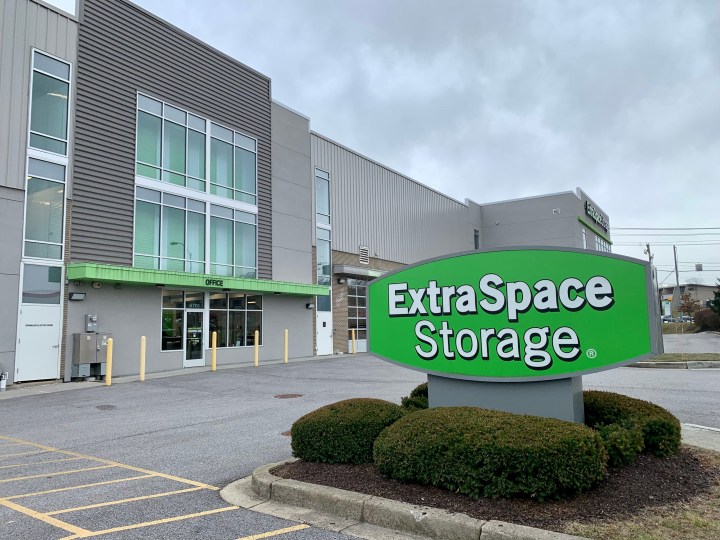
What’s up with all the new storage space?

In the office of Extra Space Storage — the chain with the green signs — in Timonium, Maryland, Tasha Brown was buying boxes and inquiring about storage for an unexpected move. Her landlord had stopped paying the mortgage and lost the property to foreclosure. After renting the place for six years, Brown had just a few weeks to find new housing.
“Very unfortunate, but I have to get boxes to pack up my stuff and my children,” she said.
Nearly 1 in 5 Americans rent storage space away from home, according to StorageCafe, a storage search website from the real estate software company Yardi. Many people use storage during a move or other life transition, and the industry has expanded rapidly. In the past five years, Yardi data shows, self-storage companies have added more than 265 million square feet of rentable space around the country, or almost 10 square miles.
If you’re picturing rows of low-slung buildings with roll-up doors on the outskirts of town, today’s storage spaces are going for a different look. At the three-story Extra Space in Timonium, customers can drive through huge bay doors to load and unload their coffee tables and stamp collections out of the elements. Monitors display footage from security cameras all over the brightly lit building.
“We want it to be sort of the Nordstrom of storage, is kind of what we’re looking for,” said Brian Whitham, the company’s division vice president for the mid-Atlantic region.
This almost 800-unit space opened almost four years ago, during the pandemic, when a lot of us cleared out space to work at home, and a ton of people moved, driving up demand. Right across the street is a competitor — Public Storage — the chain with the orange signs. There are seven self-storage spaces, including another Extra Space, along a stretch of about 3 miles near Interstate 83.
Another force driving the growth: investors. Frank DeSalvo leads self-storage investment sales at Franklin Street Real Estate Services. At the same time migration grew during the pandemic, he said, “we had this really cheap capital — 3% and 4% interest rates — and it needed a place to go.”
Many of the traditional commercial real estate investments, like apartment buildings, shopping centers and office space, weren’t doing so hot.
“Self-storage really kind of came to a new level during that time period, because it was very safe,” DeSalvo said.
Safe, because self-storage has held up pretty well during recessions, when more people and businesses have to downsize or move. But now, DeSalvo said, some markets have too much storage space, and delinquency and vacancy rates have been rising.
Still, the industry can count on one thing.
“The American economy is built on consumption, right?” said Ushma Pandya, co-founder of Think Zero LLC, a waste reduction firm.
Consumer spending on goods has kept growing, in spite of inflation. Meanwhile a whole industry has grown up around decluttering.
“We have all this stuff that we’re all trying to get out of our house, and I’m like, ‘Why do we buy it?’” she said.
At the Extra Space Storage in Timonium, Steve Crawford was unloading a shovel and hedge trimmer from his SUV to move into his 10 feet by 10 feet space. What else has he got in there?
“Things I can’t fit in my house,” he said. “Excess clothes, furniture, music equipment — all kinds of stuff.”
Crawford is a longtime customer, like about 40% of the people who rent from Extra Space, according to the company. He lives in a three-bedroom townhouse with no basement for his gear.
Does he ever consider getting rid of stuff rather than paying to store it? “Once a month, when I see the bill,” he said.
That bill is now $273 a month. Crawford said he’s trying to pare down and hopes to eventually let the space go.
“I’m trying,” he said. “I hope that if you ever come back here, I’m not here.”
Correction (Feb. 20, 2024): A previous version of this story misstated the source of survey data about Americans’ use of self-storage.
There’s a lot happening in the world. Through it all, Marketplace is here for you.
You rely on Marketplace to break down the world’s events and tell you how it affects you in a fact-based, approachable way. We rely on your financial support to keep making that possible.
Your donation today powers the independent journalism that you rely on. For just $5/month, you can help sustain Marketplace so we can keep reporting on the things that matter to you.











